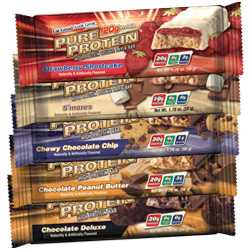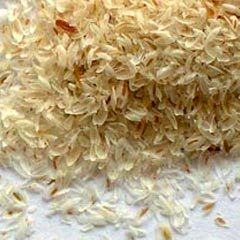Everyone loves to go out to eat; a statement made evident by the fact that Americans eat out an average of 4-5 times a week. And why not? It’s quick, easy, clean-up free, and a great way to get out and socialize with family and friends. However, studies have shown that the average restaurant meal contains over 1000 calories, which can make dining out on a diet nearly impossible. It’s unrealistic to expect yourself to stay in and cook every single night, so what’s the solution to this calorie conundrum? We’ve put together a review of Atlanta-area restaurants that offer up healthier alternatives to the calorie bombs you’d encounter elsewhere. So go ahead and treat yourself to a fun night out, minus the guilt!
Seasons 52

If you’re looking for the perfect Friday night date spot, but want to avoid the rich and hearty fare often offered at romantic restaurants, Seasons 52 is the perfect choice. The atmosphere is casually sophisticated, and the menu offers a wide variety of healthy dishes prepared with fresh, local ingredients. The theme at Seasons 52 is “healthy indulgence,” and it delivers just that; delicious fare that you can enjoy without feeling guilty afterward. The menu features everything from baked flatbreads to grilled seafood to wood-fired steaks, lamb and pork chops, along with an extensive wine list. Even better? Nothing on the menu is over 500 calories, and the nutritional information on each dish is readily available to help you make the right choice for you. The best part? You can even enjoy a guilt-free dessert! All of the dessert offerings at Seasons 52 are served in a shot glass, so you get just enough to satisfy a sweet tooth without feeling like you’ve demolished your diet, and with flavors like key lime pie, rocky road, and chocolate peanut butter mousse, who could resist a little post-meal indulgence?
Seasons 52 is located in Buckhead at 3050 Peachtree Rd. NW and in Dunwoody at 90 Perimeter Center West.
Cafe Sunflower

For all of the vegetarian/vegans out there, Cafe Sunflower is a must-stop spot in Atlanta. A small, cafe-like feel with simple decor, reasonable prices, and a casual vibe, Cafe Sunflower is the perfect place to enjoy a light lunch with friends or a weeknight dinner date without breaking your wallet or your waistline. If your strictly vegan, it’s difficult if not almost impossible to find a dish let alone a whole menu that caters to your dietary restrictions, but Cafe Sunflower does just that. Everything on the menu is meat-free, and the few dishes that include dairy products such as real cheese are labeled as such so that any level of vegan can easily navigate the menu and find something they can eat. And with menu items such as Berry Barbecue Tempeh, Baked Stuffed Acorn Squash, and Orzo Eggplant Lasagna, who wouldn’t find something to please their palate?
Sunflower Cafe is located in Buckhead at 2140 Peachtree Rd. NW and in Sandy Springs at 5975 Roswell Rd.
R. Thomas Deluxe Grill

No article on healthy restaurants in Atlanta would be complete without R. Thomas, a family-owned eatery that has become a landmark in the Brookwood Hills neighborhood since it’s opening back in 1985. Self-described as an “oasis in the city,” R. Thomas’ eclectic decor and trademark patio surrounded by various plants and caged tropical birds, it certainly lives up to that description. The menu is based on the philosophy that food is medicine, and that a diet free of preservatives and pesticides will ultimately lead to better health. They serve breakfast, lunch, and dinner, and menu items include everything from quinoa stir-frys to pastas to grilled chicken and fish to Southwestern entrees such as tacos, burritos and wraps. They are also known for their fresh, made to order juices and smoothies, making it the perfect stop for a pre-workout fuel-up or post-workout snack. Also, R. Thomas is open 24/7, so Atlantans can enjoy fresh, healthy fare any time of day, any day of the week.
R. Thomas is located in Brookwood Hills at 1812 Peachtree st. NW.
True Food Kitchen

True Food Kitchen is a growing restaurant chain which recently expanded into Atlanta with their newest location at Lenox Mall in Buckhead. The basis of the cuisine at True Food Kitchen comes from the anti-inflammatory diet, an eating plan designed to reduce chronic inflammation which can cause a number of health issues and diseases. Inflammatory foods are those that are high in antioxidants and omega-3 fatty acids, and are prepared without the use of added fats, oils, butter, and salt. True Food Kitchen aims to popularize these healthy foods by preparing them in a way that looks good and tastes good too, and serving them in a trendy restaurant environment that will bring people in whether they’re grabbing a quick bite during the workday or enjoying a Friday night out with friends. The menu offers a wide variety of dishes including salads, pizzas, appetizers, entrees, sandwiches and burgers using lean meats such as turkey and bison instead of beef. They also have a selection of natural refreshments using antioxidant-rich fruits, veggies, spices and teas as ingredients. Even the restaurant itself is sustainable, using recycled wood and materials in their floors and furnishings. With it’s fresh, tasty cuisine and bright, fun atmosphere True Food Kitchen is one chain that’s definitely worth a try; just order the edamame dumpling appetizer and you’ll see what I mean!
True Food Kitchen is located in the Lenox Square Mall at 3393 Peachtree Rd. NE





























 Your salad’s no good if you smother these on top!
Your salad’s no good if you smother these on top! um…eating for two?
um…eating for two? It’s ok, she worked out today.
It’s ok, she worked out today. Back away from the snack foods!
Back away from the snack foods!
 Ya gotta have both!
Ya gotta have both!




















